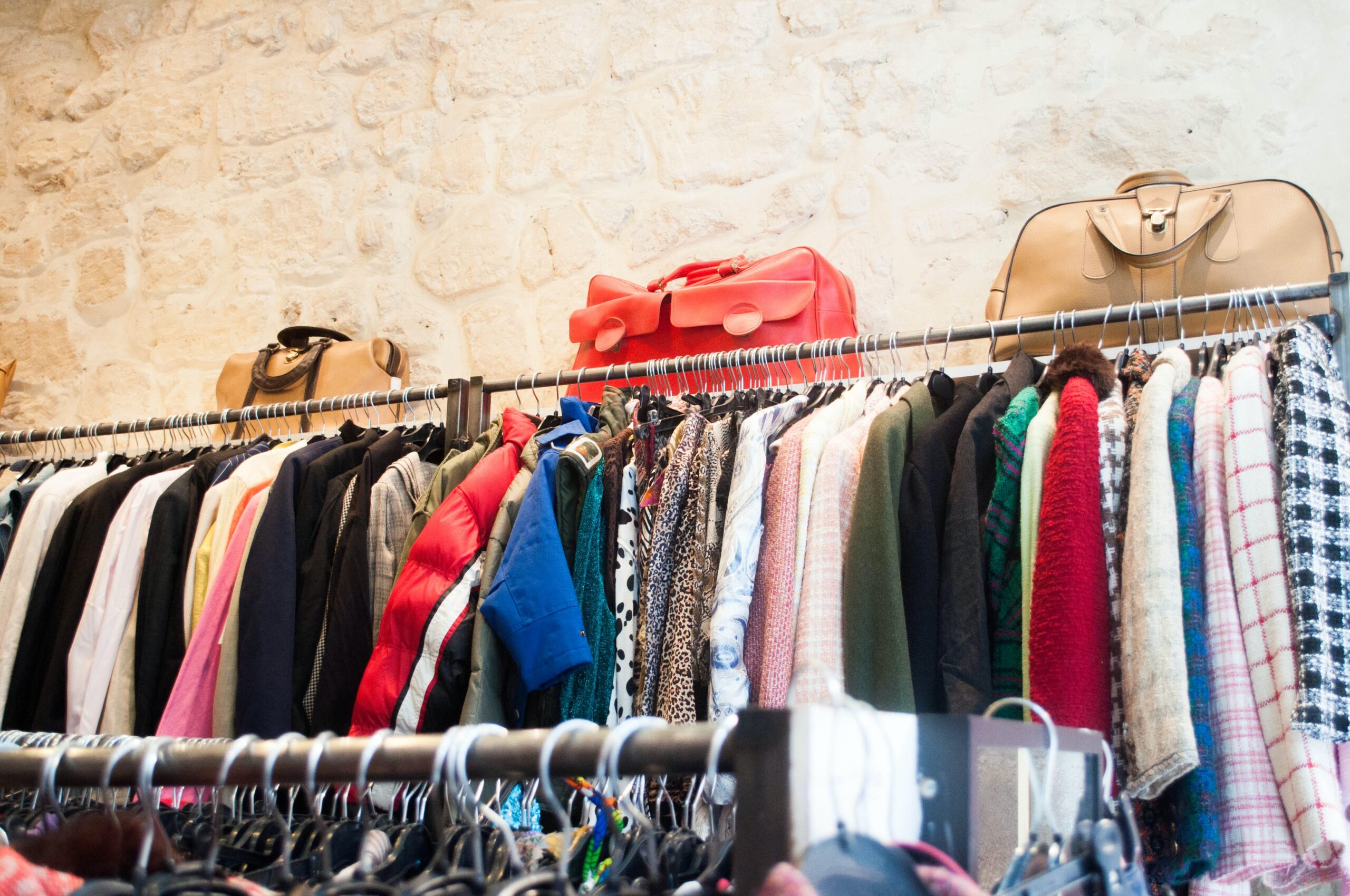Note: The statutes mentioned in this article apply to Indian Jurisdiction.
Like to stay up with trends? Let me introduce you to one which can keep you consciously fashionable.
Fashion Thrifting is one of the hot topics amongst today’s youth who are equally active about climate change. The growing fear of fast fashion is taking over, because not only are the chemicals used in the manufacturing of clothes and accessories harmful to the planet, but also many brands are infamous for abusing their workers. Socially fast fashion is the reason for large-scale pollution.
To save us from all that, Fashion Thrifting is a viable option to pull off our sustainable style statements. Thrifting, or purchasing second hand apparel let’s you step into the world of sustainable fashion in the simplest way possible. It keeps the previously owned clothing from dumping into landfills and extends its lifetime. It stands by the 3 Ps of sustainability – People, Planet and Profit. It avoids the need for additional production, labor, use of carbon in transit, and other intermediate costs. It’s a sustainable and profitable strategy keeping the garments in the market at the lowest possible cost, environmentally and socially.
There are so many of us who are invested and aware of fashion thrifting. There is a stream of thrift stores emerging every day especially online, even the audience around is loving the concept of trading their old clothes back to the market. People now have access to branded products for reasonable prices. In a world where buying second-hand products was questionable or risky, it’s been actively taking place in people’s conscious minds towards sustainable living and opting for eco-friendly options.
INTELLECTUAL PROPERTY RIGHTS OF HOLDERS
Intellectual property rights of a holder are basically that they have a right to re-sell their product if they own it legally, it is their property and they cannot be copyrighted for it, as according to The Doctrine of First Sale it is one of few theories in the law relating to intellectual property rights that governs limiting the rights of the owners of copyrighted works.
This concept tries to find a middle ground between the demands of IPR owners and the expectations of society. Despite the fact that it is not codified, the notion of first sales is a common law doctrine derived from a combined reading of many clauses of the Indian Copyright Act 1957[1].
Copyright law does not grant artists and intellectuals a monopoly over their work, it only rewards them for it.
It cannot disregard the needs of society. So, to give effect to societal interests, and a balance between the creators’ rights and the rights of the general public, a niche is created for the doctrine of the first sale.
In simpler words, the First Sale Doctrine means once a tangible copyrighted work is sold legitimately for the first time, the original copyright owner loses rights to the item and the customer is free to do anything he or she desires with the item be it re-selling or donating. That’s why you must have heard of re-selling electronic devices, furniture, clothes, etc on apps like OLX and Meesho at second-hand prices.
INTELLECTUAL PROPERTY RIGHTS OF RESELLERS
You can lawfully sell whatever item you want as long as you bought it legally from a store, was given to you as a gift or the item(s) were not counterfeit. You have the complete liberty to click pictures and list your products on the internet. Those are your pictures, hence your intellectual property.
Intellectual property laws preserve the rights of people’s original ideas, innovations, inventions.
Your listing of the item can be inclusive of anything that is labelled on the tag like the brand, model number, or any additional description.
Listing the tag information gives you an upper hand to gain buyer’s confidence and saves you from a “not as shown” situation.
Most resellers wipe up any dirt or defects that may detract from the total sale price of your item before listing it. Cleaning your things is not only a good work ethic, but it also increases its value.
While listing your product you should never use any Internet or a stock photo, as they are considered as intellectual property and may be called infringing of the trademark in specific cases and as we know many businesses, small or big, send stop and desist letters to anyone who infringes on their intellectual property. So to be on the safer side, always list your own images.
Moving on, you must keep it in mind to not advertise or sell goods with evident visible Logos, be it recycled, upcycled, or created items.
The trademark act,1999[2] protects the logos of any registered company that oversees a creator’s use of words, phrases, symbols, product shape, or logo to identify and differentiate its products from its competitors.
While advertising your product you must not use the manufacturer’s logo without their authorization, for instance, you are selling a Polo Ralph Lauren T- shirt normally their logo is shown on their garments. You are allowed to use your own picture with the logo, but not a close-up just of the logo, even if you clicked it yourself.
FEW RECENT FASHION LAWSUITS REGARDING THE RESELLERS MARKET
- Chanel recently made its feelings about the luxury resale of high-end goods clear. In March 2018, the Paris-based design firm made news when it filed a vehement lawsuit against What Goes Around Comes Around (WGCA), claiming that the infamous vintage retailer was selling a large number of second-hand Chanel items also alleging that some of them were fake. Not only that it also filed a counter-suit against The RealReal. The Paris-based fashion house accused The RealReal of trademark infringement and counterfeiting, alleging that the famous resale site is “selling counterfeit CHANEL handbags,” despite its claims that it “ensures that every item on its site is 100 percent genuine.” Chanel’s mini-ligation frenzy was said to be as “nothing more than a thinly-veiled effort to prohibit people from reselling their original used items, and to prevent customers from buying those goods at discounted prices,”.[3]
- The most recent case of 2022 of Luxottica and The RealReal appear to have settled a brief legal battle over the reseller’s alleged practice of “knowingly and deliberately hijacking of Luxottica Group’s and Oakley’s famous trademarks” on its e-commerce site by “promotion and sale of sunglasses bearing counterfeits of the Ray-Ban and Oakley trademarks.”
- Another lawsuit Luxottica group Vs RealReal,Inc.: RealReal argued against Luxottica that it is protected by the First Sale doctrine (which means that once a trademark owner releases its goods into the market, it generally cannot prevent the subsequent re-sale of those goods). By making such a claim, The RealReal seemed to imply that either the glasses in question were genuine – or that even if they were counterfeit, they came from Luxottica or another authorised source. The RealReal claimed, among other things, that any alleged violation on its side was “innocent” and that it “operated in good faith at all times.” And was “unaware” of the fact that the products specified in the complaint were counterfeit goods.[4]
CONCLUSION
I think it’s safe to say Thrifting appears to be popular with the youth in particular for its low-cost compared to new expensive clothing, it’s just a great step towards sustainable fashion. The sudden surge in online thrift stores in India over the pandemic years is significant evidence of the high demand for second-hand clothing and many new businesses based on thrifting are emerging.
The seller manufacturing rejects second-hand apparels and even closet clearances. Clothing such as high-waisted jeans, formal shirts, party dresses, lingerie, and so on are among the items available with such great prices and quality.
Not only that but also the whole concept of wearing second-hand clothes is changing, How it is seen is changing, they are being seen as a need in our society.
However, as more and more young people openly display their thrift attire on their social media profiles, this attitude appears to be progressively shifting. Thrifting is suddenly a fashionable pastime! The second-hand store owners are experiencing an outpour of interest from their followers which is mainly young college students or early career professionals.
Despite being restricted to a small online group in India, thrift culture has grown in popularity in recent years. Only time will tell whether the youth’s frugal culture is a passing fad or a phenomenon that is here to stay. In the long run, it may be in the best interests of both people and the environment if thrifting flourishes, as it is one of the most effective methods to shop fashion responsibly and consciously.
References:
[1] Indian Copyright Act, No. 13 Acts Of Parliament, 1992 (India)
[2] Trade marks act, No. 47 acts of parliament 1999 (India)
[3] (Fashion Law in 2018: 11 of the Year’s Top Lawsuits, December 7, 2018 – By TFL) < https://www.thefashionlaw.com/fashion-law-in-2018-10-of-the-years-top-lawsuits/>
[4] (Luxottica, The RealReal Settle Suit Over Allegedly Counterfeit Eyewear, January 12, 2022 – By TFL) <https://www.thefashionlaw.com/luxottica-the-realreal-settle-suit-over-allegedly-counterfeit-eyewear/>










